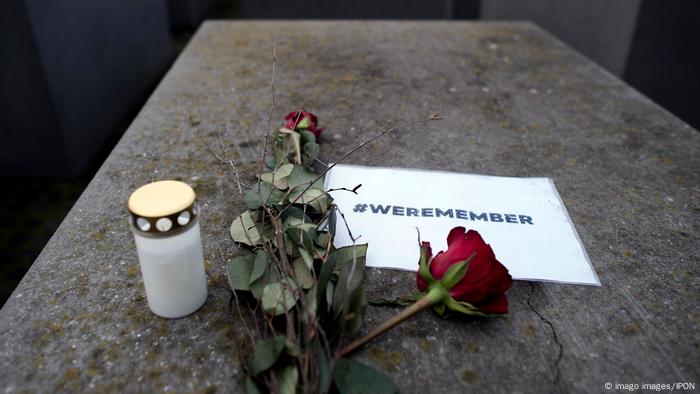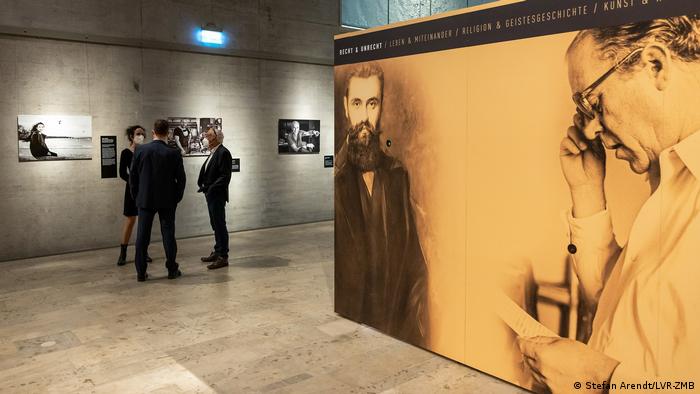
The first documented evidence of a Jewish presence in Europe north of the Alps dates to AD 321, when Roman Emperor Constantine issued a decree allowing Jews to be appointed to the city council of Cologne. Only two historical copies of this document have survived to this day. One of them is kept in the Apostolic Library of the Vatican.
This Roman edict is irrefutable proof that Jewish communities have been an integral part of European culture since ancient times, emphasizes a representative of the German government’s office, commissioner for Jewish life in Germany and the fight against anti-Semitism.
On the occasion of the 1700th anniversary of the decree of Emperor Constantine, the association “321-2021: 1700 years of Jewish life in Germany”, together with the government of Germany, decided to mark this event by implementing various projects and holding festive events.
The number of events exceeded all expectations
The head of the association “321-2021: 1700 years of Jewish life in Germany”, musician and entrepreneur Andrei Kovacs, is very pleased with the results of the anniversary year. As he noted in an interview with DW, the organizers of this project are simply surprised at the breadth of participation by public representatives and politicians in it: the number of events held far exceeded initial expectations.
Head of the association “321-2021: 1700 years of Jewish life in Germany”, musician and entrepreneur Andrey Kovach
“We had about 840 partners in all 16 federal states. This simply shocked us. In addition, there were projects that were carried out without the support of sponsors and therefore were not included in the statistics. Among them were events in more than 20 countries German diplomatic missions around the German Foreign Ministry also took part in the celebrations,” says Andrei Kovacs proudly.
In total, more than 2,400 events were held across Germany during the anniversary year. In thirteen German cities, as part of the Divided History project, exhibitions of historical artifacts were also launched, telling about Jewish life in the Middle Ages. And as part of the “Sukkot XXL” project, guests were introduced to how Jews celebrate their religious holidays, including the Feast of Tabernacles – Sukkot. According to Kovacs, this played an extremely important role in bringing people closer to Jewish life.
Overview of Jewish life
In the Münsterland region, North Rhine-Westphalia, a project was carried out in which children and young people searched for traces of Jewish life in their area and documented them. The idea of the project, called “Jüdisch hier”, was to bring its participants closer to the secular history of Jews in Germany, the result of their knowledge of the life of representatives of the Jewish people in their cities. .

In one such study, students followed the life of a certain Nana Kahn, who was born in 1910 and graduated from high school in the Hanseatic town of Attendorn in 1929. They mapped the girl’s whereabouts during this period and documented her life.
Now interested users can learn about Nana Kan’s story by accessing an educational app called BIPARCOURS. There you can see a picture of Nana and learn facts from her life. The app also shows users which way to get to the Kahn school in Attendorn, outlines Hitler’s anti-Semitic laws, and finally leads them to a sign with the names of Jews deported from the area to concentration camps.
The project “321-2021: 1700 Years of Jewish Life in Germany” not only opened up new perspectives for Jews in Germany, but also became a kind of journey into the Jewish world – not only for non-Jews, but also for Jews who would like to find their identity in German society, says Andrey Kovacs. However, there are some challenges that still need to be overcome, he notes.
A chance for change that needs room to grow
“When I was young, in my Jewish home it was so that no one could imagine their future in Germany. Now the situation has changed, and the celebrations that ended showed this clearly”, emphasizes Kovacs. According to him, today the representatives of Jewish youth have a new image of themselves when they want to be noticed and, above all, respected in a modern and future-oriented society. “And this is a chance for change, but he needs room to grow,” believes Andrey Kovach.

On display at the Jewish Museum in Cologne
According to him, the second task now is to preserve the memory of the Holocaust, as there are very few survivors. And the third aspect is the growth of anti-Semitism and conspiracy theories, which are again becoming visible both abroad, for example in Russia, and in Germany, Kovacs points out. In this sense, he recalls the discussion about anti-Semitism that arose around the documenta exhibition of contemporary art in Kassel.
In the future, the head of the association “321-2021: 1700 years of Jewish life in Germany” plans to hold a Jewish music festival called “Shalom Cologne”, and will also implement a large project of a pan-European scale. More importantly, he said, the commemorative year gave Jews and Jewish associations in Germany the courage to open up and celebrate their religion. And this is the main result of a unique project. I would like to believe that this will continue in the future, expresses the hope of Andrei Kovacs.
Source: DW
Lori Barajas is an accomplished journalist, known for her insightful and thought-provoking writing on economy. She currently works as a writer at 247 news reel. With a passion for understanding the economy, Lori’s writing delves deep into the financial issues that matter most, providing readers with a unique perspective on current events.